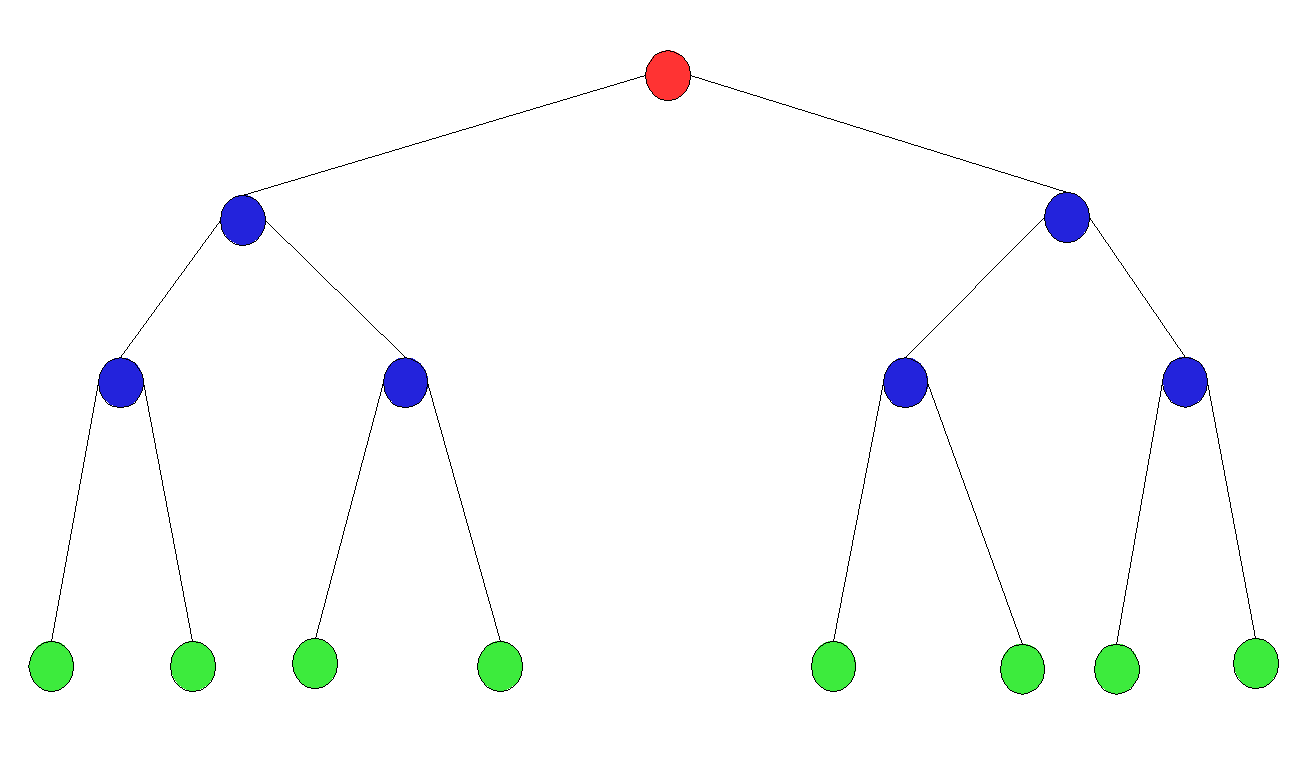222. Count Complete Tree Nodes
Given a complete binary tree, count the number of nodes.
Note:
Definition of a complete binary tree from Wikipedia:
In a complete binary tree every level, except possibly the last, is completely filled, and all nodes in the last level are as far left as possible. It can have between 1 and 2h nodes inclusive at the last level h.
Example:
Input: 1 / \ 2 3 / \ / 4 5 6 Output: 6


计算完全二叉树的节点个数。如果忽略完全二叉树的性质,像普通二叉树那样进行遍历(先序、中序、后序都可以)统计节点个数,会TLE,所以还是需要用到完全二叉树的性质的。 这里的完全二叉树是指除了最后一层,其他层都是满的,并且最后一层所有节点都是靠左的。具体定义可以看维基百科,下图就是一个完全二叉树的例子: 如果二叉树是满的,比如下面这种,且树的高度是h,则树的节点个数等于$2^h-1$。 那么怎样判断一棵完全二叉树是否是满的呢,只需求一下其极左高度lh和极右高度rh是否相等,如果相等,则是满的,可以用上述公式求解节点数。如果不是满的,则在其左右子树中递归求解节点数,再加上根节点这个节点个数1。 代码如下:
class Solution {
public:
int countNodes(TreeNode* root)
{
if (!root)
return 0;
int lh = 0, rh = 0;
TreeNode *l = root, *r = root;
while (l) {
++lh;
l = l->left;
}
while (r) {
++rh;
r = r->right;
}
if (lh == rh)
return (1 << lh) – 1;
return countNodes(root->left) + countNodes(root->right) + 1;
}
};本代码提交AC,用时82MS。
以上代码还可优化,因为如果知道父亲节点的高度时,其实也就知道了孩子节点的高度了,就是父亲的高度减1,所以在递归时,可以保留高度信息,减少冗余计算。代码如下:
class Solution {
private:
int height(TreeNode* root, int lh, int rh)
{
if (lh == -1) {
lh = 0;
TreeNode* l = root;
while (l) {
++lh;
l = l->left;
}
}
if (rh == -1) {
rh = 0;
TreeNode* r = root;
while (r) {
++rh;
r = r->right;
}
}
if (lh == rh)
return (1 << lh) – 1;
return height(root->left, lh – 1, -1) + height(root->right, -1, rh – 1) + 1;
}
public:
int countNodes(TreeNode* root) { return height(root, -1, -1); }
};本代码提交AC,用时55MS,快了一些。